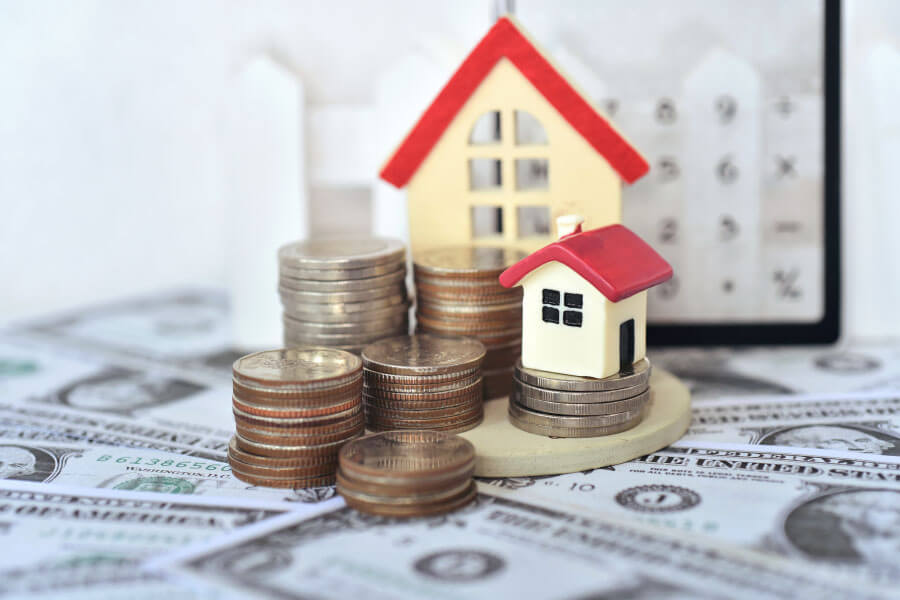7 Options for Financing a New Roof

If you’re like most people who find out they need a new roof, you’ll immediately start looking into the best ways to finance that new roof. Luckily there are several different roof financing options, and each has its own pros and cons. All of them offer a way to avoid paying out of pocket for a new roof, which is unrealistic for many homeowners, particularly if the roof replacement project is unexpected.
Homeowners Insurance
Before you start looking into roof financing options, consider whether your homeowner’s insurance may cover the cost of your roof repair or replacement. Most homeowners’ policies don’t cover normal wear and tear over the lifetime of a roof, but insurance coverage may be available for roof replacement due to damage, as long as the cause is covered in the policy.
Key Things to Look for in a Roof Repair or Replacement Loan
Your credit score reflects your borrowing and repayment history, and it will have an effect on your loan and on which roof financing options make the most sense for you. When choosing the right roof financing option for your situation, keep in mind a few key variables that will help you compare.
Loan Terms
Loan terms are the characteristics of the new roof financing option you choose. It’s important to be aware of these loan terms:
- Loan Repayment Period refers to the amount of time (either months or years) that you have to completely repay the loan.
- Maximums are the maximum amount of money you are approved to borrow.
- Monthly Payments are the amount you pay monthly until you have paid all the initial loan and interest. Make sure the monthly payment amount is affordable for you.
Annual Percentage Interest Rates
Annual percentage rate describes how much interest the lender is charging on your remaining loan balance every period, and it may include additional costs besides interest. In general, the higher the APR, the more expensive your loan is over its lifetime.
You can compare your new roof financing options based (in part) on interest rate. Fixed-rate loans have the same APR over the lifetime of the loan, so your payment will always be the same. Variable interest rate loans may fluctuate up and down after an initial low interest rate period, so your payments may be higher or lower.
7 Roof Financing Options
Depending on the scope of your roofing project, it often makes sense to pay for a new roof over time.
1. Financing through Your Roofing Company
In many cases, the easiest way to finance a new roof is make your arrangements through your roofer. Melvin Belk Roofing works with EnerBankUSA to offer several financing plans to fit your roof repair or replacement project as well as your own financial situation. Options include traditional loans and zero interest loans, including the very popular 0% APR 36 month loan. For those who plan to pay off their roof loan within 3 years, this zero interest rate loan is a unique opportunity to keep the interest in your pocket.

2. Personal Loan
Personal loans are not secured by collateral, so if you choose a personal loan to finance a roof, you can expect higher interest rates and higher loan origination fees. Your interest rate and monthly payments will vary depending on your credit score. One advantage of personal loans is that they often do enable you to get your roof financing funds more quickly. And another advantage is that if for some reason you are unable to keep up with the monthly payments, you will not be putting your house at risk.
3. Home Equity Loan
You may be able to get a lower interest rate for your roof repair or replacement by choosing a home equity loan, which uses your home as collateral. Home equity loans can be a great financing option if you have a lot of equity in your home and have strong credit because they tend to have lower interest rates. However, be aware that the approval process can take weeks, and failure to pay the monthly payments may put you at risk of losing your home.
4. Home Equity Line of Credit (HELOC)
Another way to finance a new roof is through a home equity line of credit. HELOCs are similar to home equity loans because both use your home as collateral. However, the difference is that instead of borrowing the entire loan amount in a lump sum, a home equity line of credit allows you to borrow only as much money as you need at a time. In effect, this roof financing method is similar to a credit card. A home equity line of credit usually has a lower variable interest rate than a home equity loan, but it is harder to predict the final cost of this roof financing option because the interest rate can rise and fall after the promo period.
5. Cash-out Refinance
A cash-out refinance can be a great way to finance a new roof when mortgage rates are low. With this type of roof financing option, you replace your first mortgage with a new, larger loan amount that covers remainder of your loan plus your roof replacement cost. You can also stack other home improvement projects into the lump sum along with your roof replacement project. When the work is completed, you usually end up with one mortgage payment.
6. Credit Card

Credit cards are another option for roof financing. You may even be able to get a 0% APR credit card if you have excellent credit. But the catch is that the repayment period for this type of financing is generally among the shortest for any type of loan. Most credit cards don’t offer 0% interest rates, however, and in fact, they usually have very high interest rates that accumulate. By the time the new roof is paid off on your credit card, you could end up more than doubling the cost of financing your roofing project.
7. HUD Home Improvement and Repair Loan
Some homeowners who don’t have enough equity to borrow against their home may be eligible to pay for a roof repair with an FHA Title I home and property improvement loan, even with a low credit score. This kind of roof financing is only offered by FHA-approved lenders. These fixed-interest loans have long repayment terms. You have to live in the home for at least 90 days before you can be eligible for an FHA Title I loan.
Making your Roofing Project Outlast Monthly Payments
Although there are many ways to finance a new roof, you’re likely to find that one financing option works best for your roof replacement. Factor in your own budget before making any roof financing decision, along with loan fees, repayment terms, and interest rates. In the long run, make sure to work with a reputable roofer with good references. That way your roof project will far outlast any roof loans you may have used to pay for it.
The post 7 Options for Financing a New Roof appeared first on Melvin Belk Roofing.

